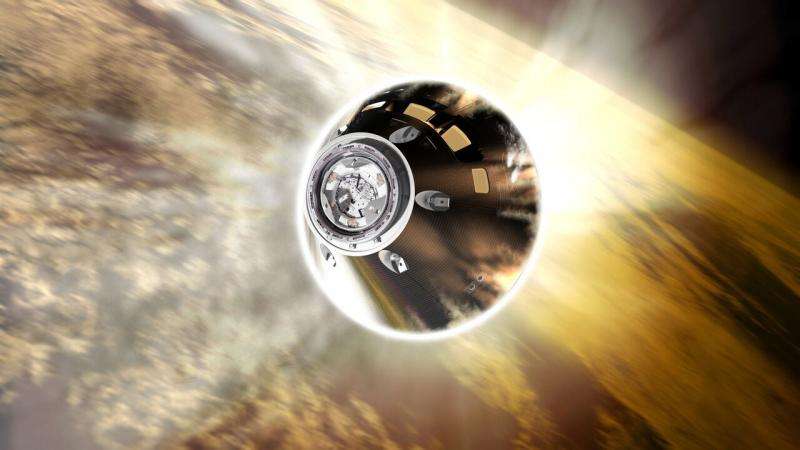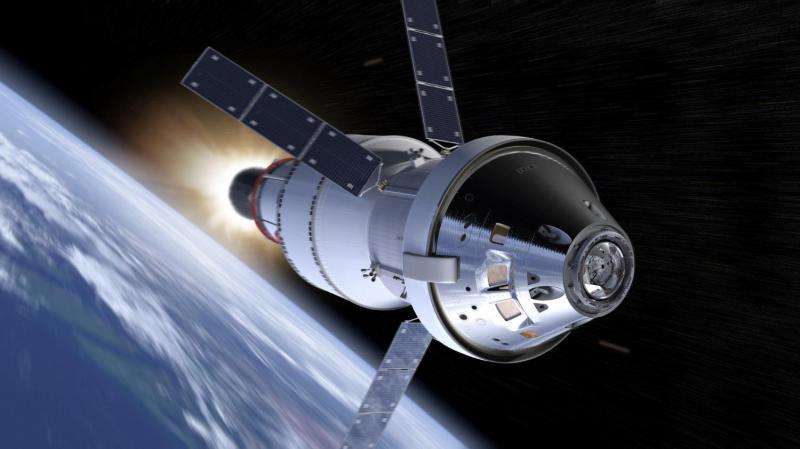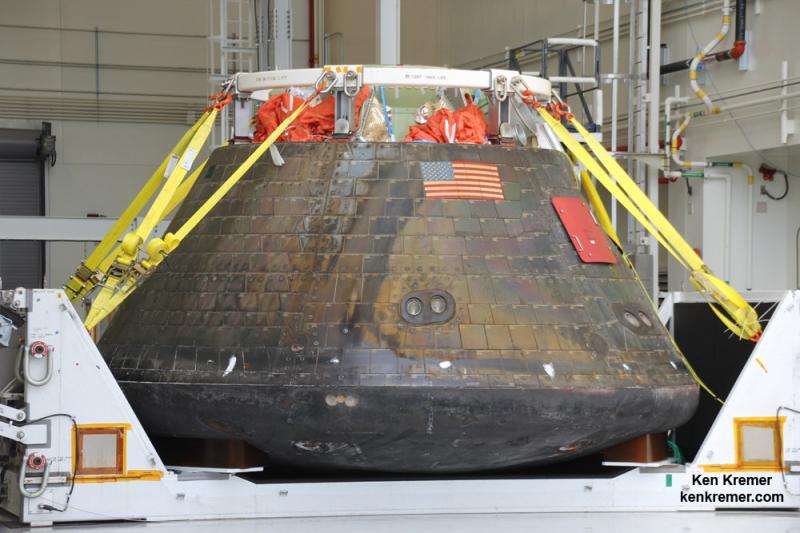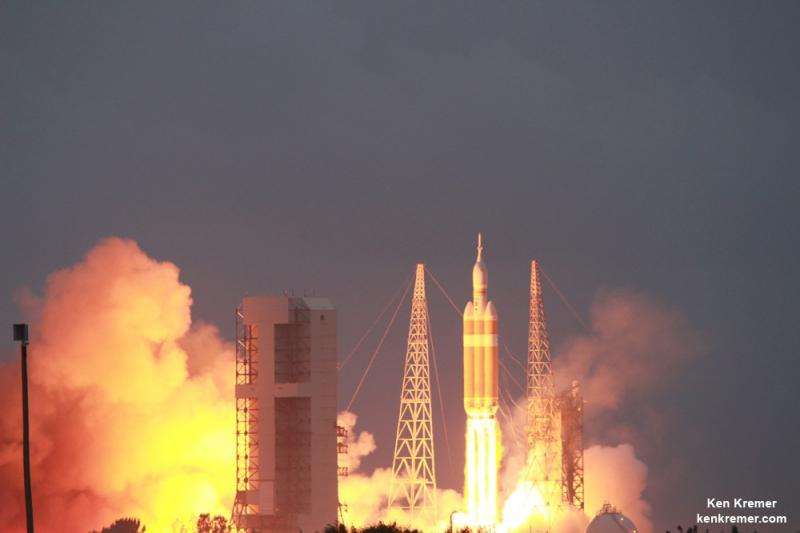Orion gets beefed up, silver-metallic thermal protection coating for next flight on EM-1

In the wake of NASA's supremely successful inaugural test flight of the Orion deep space capsule on the EFT-1 mission in Dec. 2014, NASA is beefing up the critical thermal protection system (TPS) that will protect astronauts from the searing heats experienced during reentry as the human rated vehicle plunges through the Earth's atmosphere after returning from ambitious expeditions to the moon and beyond.
Based in part on lessons learned from EFT-1, engineers are refining Orion's heat shield to enhance the design, ease manufacturing procedures and significantly strengthen is heat resistant capabilities for the far more challenging space environments and missions that lie ahead later this decade and planned further out in the future as part of NASA's agency-wide 'Journey to Mars' initiative to send humans to the Red Planet in the 2030s.
On all future flights starting with Exploration Mission 1 (EM-1), the Orion crew module must withstand the higher temperatures and speeds experienced during return from more distant destinations such as the moon, near-Earth Asteroids and Mars.
"Orion's thermal protection system is essential to successful future missions," said John Kowal, NASA's thermal protection system lead for Orion, in a statement.
"As we move toward building the system for EM-1, we've been able to take advantage of what we learned from building and flying Orion to refine our processes going forward."
Orion's thermal protection system is comprised of the 16.5-foot-wide (5-meter-wide) main heat shield covering the rounded base of the capsule as well as the grid of back shell tiles bonded around the vehicle from top to bottom.
Starting with EM-1, engineers will bond Orion's thermal protection system back shell tiles with a silver, metallic-based thermal control coating.

The back shell tiles were black colored during the two orbit, 4.5 hour long EFT-1 mission.
Orion EM-1 will launch uncrewed on the maiden test flight of the NASA's mammoth Space Launch System (SLS). Liftoff is targeted for no later than November 2018 and SLS will be configured in its initial 70-metric-ton (77-ton) version with a liftoff thrust of 8.4 million pounds.
SLS-1 will boost the unmanned Orion on an approximately three week long test flight beyond the moon and back.
The SLS-1/EM-1 test flight with the uncrewed will launch from Launch Complex 39-B at the Kennedy Space Center.
During EM-1, Orion will endure a more intense re-entry environment compared to the EFT-1 flight profile which flew to high Earth orbit of approximately 3600 miles altitude and experienced roughly 85% of the reentry speed.
During the EFT-1 reentry, Orion encountered speeds of 30,000 feet per second (20,000 mph) and temperatures of approximately 4,000 degrees Fahrenheit (2200 Celsius).

By contrast, Orion EM-1 "will experience a faster return from lunar velocity of about 36,000 feet per second. While the speed difference may seem subtle, the heating the vehicle sees increases exponentially as the speed increases," say officials.
The new silver-metallic coating is "similar to what is used on the main heat shield, will reduce heat loss during phases when Orion is pointed to space and therefore experiencing cold temperatures, as well as limit the high temperatures the crew module will be subjected to when the spacecraft faces the sun."
The coating is designed to keep Orion's back shell in a temperature range from approximately -150 to 550 degrees Fahrenheit prior to entry and afford protection against electrical surface charges in space and during re-entry.

"You're trying to hit this sweet spot because when you're looking at the sun, you don't want to get too hot, and then when you're not looking at the sun and instead in darkness, you don't want to lose all the heat that the spacecraft generates," Kowal elaborated.
NASA continues to make good progress on all designing, building and testing elements of SLS-1 and Orion EM-1 as reported here including the SLS RS-25 core stage engines, assembling the SLS core stage and Orion capsule, testing the solid rocket boosters, and modifying Pad 39-B and the mobile launcher.
Orion's inaugural mission dubbed Exploration Flight Test-1 (EFT) was successfully launched on a flawless flight on Dec. 5, 2014 atop a United Launch Alliance Delta IV Heavy rocket Space Launch Complex 37 (SLC-37) at Cape Canaveral Air Force Station in Florida.
Source: Universe Today





















